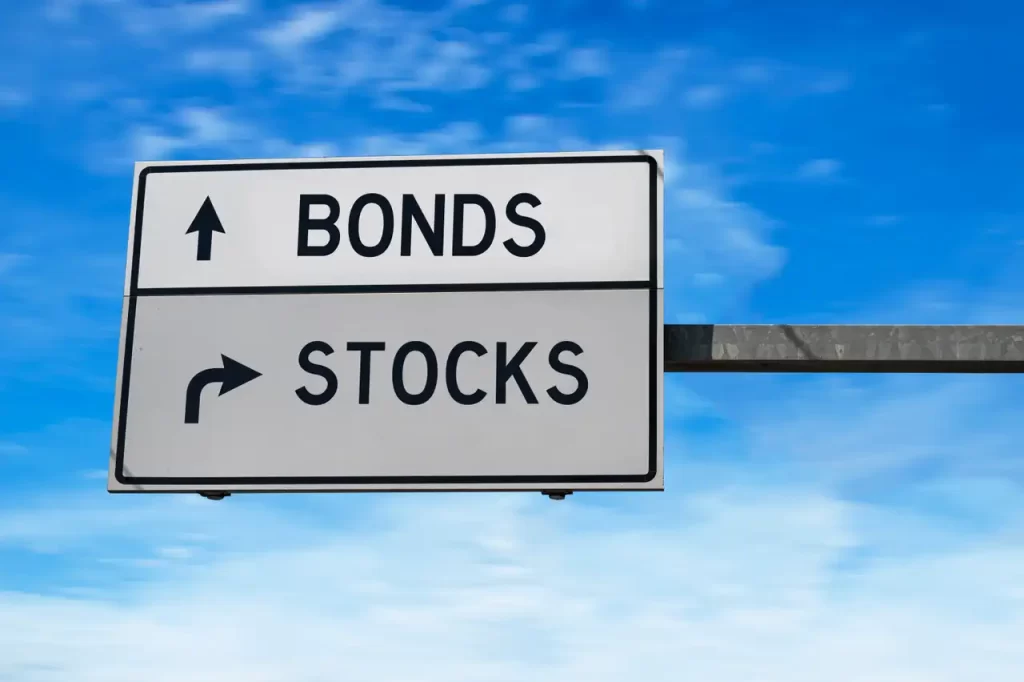The Relationship Between Stock Market and Bond Market – A Guide to Understanding
3 min read
The financial markets act as a marketplace, on which multiple assets tend to flow. Stocks and bonds are two of the more familiar.
The negative correlation between stocks and bonds over time, the positive correlation, at some point.
Inverse Relationship
In real life, there are many such examples of inverse relations: speed and travel time (the faster you drive, the less time it takes you to get somewhere); savings and spending (the more you save, the less you spend); inflation and buying power (high inflation destroys buying power; low inflation builds it) and so on. These types of dynamics help analysts make informed choices and determine what trends could be observed in data sets.
Bonds generate cash by paying interest that is taxed separately from income (the income in stocks is taxable as capital gains). If investors worry that the markets are going to crash, they move money away from stocks and into bonds, pushing up prices but also lowering yields.
Demand slams stocks and reduces the supply, leading to price fall. Investors may also choose to shuffle from stocks to bonds during downturns when consumer spending eats into corporate profits, so higher-yielding bonds become appealing; bringing bond prices and yields again up.
Positive Relationship
Bonds give investors a tax-free and safe environment to hold assets, which provides income that continues without interruption and also diversifies your portfolio and helps avoid losses in the event that the stocks plummet.
The price of bonds follows the price of stocks -inversely. Growth, inflation and monetary policy are among several reasons for this; higher economic growth means higher inflation and that drives up bond yields and prices.
Supply and demand dynamics in the bond market also impose a major role. If interest rates go up, bonds that already exist usually go down since the new ones are higher yields, which reduces demand for them and drives down prices. And the same stories occur on the stock exchanges too, with earnings generally pushing shares lower as a company’s earnings tumble – sometimes at the same time! Sometimes a break into positive correlation zone tends to be done following major economic shocks or surprises like after the Fed raised rates in 2022 which simultaneously sank stocks and bonds!
Correlation
As stocks are perceived as risky investments with higher return opportunities, bonds are relatively risk-free and low-return opportunities with low correlations; the exception is if supply-side economic shocks or inflation shocks drive the stocks and bonds to go side by side.
Inflation, for example, can sag bond prices as the market moves to cheaper, higher-return options – most of them pulling money out of stocks to depress demand and prices.
Rates might increase, lowering bond values as bonds vie for investor’s money and reduce demand and price – resulting in a negative correlation between stocks and bonds.
Volatility
Volatility is the degree to which the prices in the market fluctuate. Volatility-aware investors can act wisely; stocks owners can tweak portfolios during crashes to take advantage of any opportunity they might discover.
Bond holders, however, can sleep well knowing that bond prices will not go down since bond yields are tied to the price of bonds: higher stocks remove capital from bonds and lower prices, but raise yields to lure in money.
Volatility can come from all sorts of sources, such as monetary policy and inflation. For instance, the Federal Reserve’s monetary policy is likely to influence stocks and bonds; their efforts to tackle inflation may increase interest rates and hence affect stock prices; encouraging growth might help stocks.








